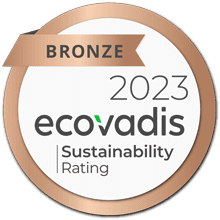Specialist
Former executive at Futu Securities International Hong Kong Co Ltd and executive at CrowdStrike Holdings Inc
Agenda
- Enterprise SaaS (software-as-a-service) sector customer trend analysis in a multi-vendor cloud software landscape, highlighting adoption rates
- Customer spending and budget allocation across major ERP (enterprise resource planning), HCM (human capital management), CRM (customer relationship management) vendors and more such as Oracle (NYSE: ORCL), Salesforce (NYSE: CRM), Workday (NASDAQ: WDAY), ServiceNow (NYSE: NOW), SAP (ETR: SAP), and others
- Key decision-making criteria across ERP and adjacent module evaluations
- Possible spend reduction on modules during a recession and growth opportunities where customers could add value
- Outlook for H2 2022 and beyond
Questions
1.
What are your thoughts on the operating environment in the purchasing environment for enterprise SaaS [software-as-a-service]? What are the 2-3 most important key trends or drivers across the main module systems – ERP [enterprise resource planning], CRM [customer relationship management], HCM [human capital management] or any other relevant SaaS products – that we should pay attention to?
2.
If we do enter a recession or period of economic contraction, what do you think should be top-of-mind for software decision-makers? What might be the top areas where budgets are allocated over the next 12-18 months?
3.
What do you think are the most mission-critical tools that chief information officers, chief technology officers, CFOs and chief human resources officers may not want to cut back on as much during a recession in terms of their SaaS play? As you mentioned, the productivity of the tools being acquired is of high importance.
4.
Which applications do you work with the most today? Which have you evaluated or purchased and why? Which do you think would be the most important or essential for your organisations over the years?
5.
Are there any specific areas where you think decision-makers should or will look to reduce value or cut back on spending if we enter a particularly harsh recession? How much of a reduction could be possible if there is one?
6.
You mentioned that spending reductions for a recession is a longer, more planned-out issue overall. Do you believe companies are altering plans for (audio distorts 23.11) spend at this point in 2022? How early on are these decisions typically made, and what does the overall contract lifecycle look like?
7.
You mentioned infrastructure software, so which applications or infra vendors do you see growing most quickly within an organisation, even in just H2 2022? Could you expand on your thoughts around that sector and its growth? What might that look like?
8.
Could you expand on what might be comprised of that hypothetical 10% cutback? You mentioned cutting the muscle and bone. Which applications or infrastructure software vendors could be first to be cut in a recessionary environment?
9.
What rate of IT spending from enterprises on digital transformation and cloud spending were you seeing? Could you rank the most- or least-penetrated applications by cloud adoptions across ERP, CRM, HR, payroll, accounting and DevOps tools?
10.
How are you thinking about the pace of the IT digital transformation efforts on mission-critical systems in particular? Do you think decision-makers could or should look to scale back efforts there, or are they particularly insulated across the suite we just discussed?
11.
Are there any applications or projects that you would consider all but guaranteed to continue to be full steam ahead, unless we enter a particularly harsh recession? Might any applications see persistent growth, even in a recessionary environment?
12.
What are your key decision-making criteria and priorities with cloud software? What are the main factors in a business ROI calculation? How have those shifted over the past 3-6 months, or how might they shift over the next 3-6 months?
13.
What systems or solutions that you work with tend to be the most difficult to rip and replace? When are point solutions at risk of being replaced by competitive vendors that have overlapping functions within their platforms? When would an ERP system potentially displace a point solution that you’re working with? Which solutions tend to be the stickiest out of those you’ve evaluated or purchased over the years?
14.
Do you think cloud software customers should or will likely have new priorities over the next 12 months, based on 2023 trends? Do you think anything could be viewed more favourably when assessing 2023 budgets, based on any specific 2022 trends that we’re monitoring?
15.
Are there any key areas of software spend that you think have an opportunity to expand and grow in terms of adoption among large customers? What do you think should be the highest priority for software spend for an enterprise setting a budget for 2023?
Gain access to Premium Content
Submit your details to access up to 5 Forum Transcripts or to request a complimentary one week trial.
The information, material and content contained in this transcript (“Content”) is for information purposes only and does not constitute advice of any type or a trade recommendation and should not form the basis of any investment decision.This transcript has been edited by Third Bridge for ease of reading. Third Bridge Group Limited and its affiliates (together “Third Bridge”) make no representation and accept no liability for the Contentor for any errors, omissions or inaccuracies in respect of it. The views of the specialist expressed in the Content are those of the specialist and they are not endorsed by, nor do they represent the opinion of, Third Bridge. Third Bridge reserves all copyright, intellectual and other property rights in the Content. Any modification, reformatting, copying, displaying, distributing, transmitting, publishing, licensing, creating derivative works from, transferring or selling any Content is strictly prohibited


